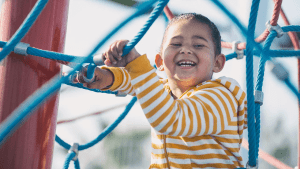Pregnancy Week By Week

Pregnancy Week By Week
Introduction
Are you searching for a pregnancy guide that goes week by week? You are fortunate! We have abundant information about every week and trimester, approved by experts, including updates on your developing baby and changes you should anticipate for yourself. Early pregnancy symptoms and indicators include:
-
missing time frames
-
morning sickness with nausea and vomiting, changes in the breasts, and fatigue
-
a lot of urine production.
It is a good idea to get a pregnancy test if you think you might be pregnant and you are experiencing any of these symptoms. It is crucial to get a pregnancy test as soon as possible if you have no intention of getting pregnant. You will have more options and be able to receive care sooner if your pregnancy is confirmed.
Miscarriages are common in the first trimester of pregnancy. Miscarriages occur in approximately 1 in 4 pregnancies. 75 to 80 percent of spontaneous miscarriages happen within the first 12 weeks of pregnancy. Because miscarriages often occur very early in pregnancy, many go unreported or unrecognised.
Weeks 1-2
Fertilisation, also known as conception, typically occurs two weeks following the onset of your last menstrual period or LMP. When a woman’s egg and a man’s sperm combine, conception results. One of your fallopian tubes is where conception takes place. These tubes connect your uterus, or womb, to your ovaries.
-
For most women, the first noticeable change is the absence of their menstrual cycle.
-
Learn about the symptoms and indicators of pregnancy.
-
Pregnancy tests are the most accurate method of determining whether you are pregnant.
-
It is crucial to begin prenatal care or consultation with a midwife or doctor as soon as you suspect you might be pregnant.

You can accomplish this by getting in touch with your local hospital’s maternity unit to locate maternity services, your GP surgery to locate a GP if you are not registered with one; You might be unsure of the precise day you become pregnant. For this reason, medical professionals use your LMP to determine your pregnancy’s length.
Weeks 3-4
The fertilised egg travels via the fallopian tubes to your uterus, fusing with the lining (a process known as implantation). After implanting, it starts to grow, and the placenta develops. Through the umbilical cord, the placenta, which develops in the uterus, provides food and oxygen to your unborn child. Your baby’s body will develop into distinct parts from each of these layers:
-
The respiratory and digestive systems, which include the lungs, stomach, intestines, and bladder, form the inner layer.
-
The heart, arteries, muscles, and bones all come together in this layer.
-
The outer layer is the neurological system, skin, nails, eyes, and lenses.
-
During the initial weeks of pregnancy, the embryo is connected to a small yolk sac, which supplies nutrition.
-
The placenta will fully develop and take over the embryo’s nutrition transfer a few weeks later.
-
Fluid envelops the developing embryo within the amniotic sac. The placenta develops from the outer layer of this sac.
-
The placenta’s cells penetrate the womb wall deeply to create a rich blood supply. This guarantees that the infant gets all the nutrition and oxygen it requires.
Week 5
You can embrace a true prince or princess in less than eight months. A home pregnancy test can now be used to confirm that you are pregnant because your body’s levels of the hormone hCG have increased during this time. See your doctor to verify the good news and determine your due date. Being a baby requires extensive development, as all major and minor organs, including the heart, lungs, and stomach, as well as the circulatory, nervous, and digestive systems, must form from the ground up.
Your baby’s heart starts to form at 5 weeks pregnant, though he most likely already has his hand on yours! It looks like a tiny tube. The neural tube forms in your baby. Your baby’s brain, spinal cord, and backbone develop from the neural tube. As tiny buds emerge, your baby’s arms and legs begin to take shape. Your baby’s heart begins to beat, and their lungs and heart are growing.
Week 6
The heartbeat of your infant is roughly 105 beats per minute. Her mouth, ears, fingers, toes, and nose are starting to take shape. Although you may be dealing with symptoms of a full-blown pregnancy, there is also a lot of good news. Your baby’s jaw, cheeks, and chin are growing out of the folds of tissue in that noticeable bump on top called the head. Eventually, these features will come together to form one adorable face. Experts measure newborns as tiny as yours, from their adorable little crown to their tiny rump during the embryonic and foetal stages of development. This is because your baby’s legs will grow bent as she gets bigger, making it difficult to measure her entire length.
Week 7
The soft bones in your baby are starting to form. The further along you are in your pregnancy, the harder they become. She has eyelids now, but they remain closed. The form of your baby’s genitalia begins. Since new brain cells are being created at a rate of 100 per minute at seven weeks pregnant, most of this growth is concentrated in the head (the better to store all those smarts). That is okay for an aspiring genius.
Speaking of friends, your little one is taking a risk this week. Her arm and leg buds start to increase and become longer and stronger, splitting into segments for the hands, arms, and shoulders, as well as for the legs, knees, and feet. However, at this early stage, the limb buds resemble paddles rather than hands or feet. This week, your baby’s tongue and mouth are also developing. Additionally, the kidneys are now in place and ready to start their crucial waste management job. Your baby is going to start peeing soon. You are in luck because diapers are not yet necessary.
Week 8

Your baby’s length is now 1.3 cm. Their appearance is still somewhat tadpole-like, but their tail is shortening and will soon vanish. The tongue and inner ear are growing, the eyes and nose are visible, and the roof of the mouth and upper jaw are joining together. At the end of the arm, buds are hands, with the beginnings of webbed fingers. At this point, cartilage makes up the arms and legs. Although the reproductive organs are currently developing, it is too soon to determine the gender of the unborn child. The foetus remains within the amniotic sac, with its yolk sac nourishing it. The placenta is growing and will use structures known as chorionic villi to attach to the womb wall.
Week 9
Your child grows fast. Their 2 cm peanut-shell-sized muscles move. They resemble self-hugs with twisted arms and legs and transparent skin. The baby’s shape is clearer. The head is huge, but the face is shaping. Closed eyes, mouth, tongue, and tiny taste buds. The baby’s inner ear is developing, but hearing will not happen for 24 weeks. The liver produces red blood cells and has subcutaneous blood vessels. You can see your baby’s fingers and toes in their developing skeleton.
Week 10
Baby nails grow with fingers and toes. Your baby’s heartbeat may be visible during prenatal care.
Week 11
The bones in your baby start to harden. Although it is still thin and transparent, her skin becomes less transparent with time. She is about half the size of her head. The fingers and toes of your baby The small, distinct, and longer fingers and toes on your baby have lost their webbing.
Organs Are Working
Your baby’s essential organs are in place by the time you reach the end of the first trimester, and many are already functioning. The pancreas begins producing insulin, the kidneys produce urine, and the liver produces red blood cells. Your unborn child’s heart is beating and has four fully developed chambers.
Genitals Are Forming
The genitals of your baby will begin to develop by this coming week’s end. It takes until roughly 11 weeks for the external sex organs—the clitoris and labia in girls and the penis and scrotum in boys—to begin to diverge from one another. Even then, it will take a few more weeks before it is easy to distinguish between boys and girls on an ultrasound.
Week 12
Small Movements
Babies reach milestones this week, such as curling their toes and opening and closing their hands (to make a fist).
Tiny Fingernails
The tiny nails on your baby’s fingers and toes are growing.
Your Baby’s Intestines
About week seven of pregnancy, the stomach and oesophagus begin to form, and the baby’s intestines grow so quickly that they poke through the umbilical cord. Their intestines will soon enter their abdomen when the abdominal wall closes.
Week 13

Your Infant Can Urinate!
Your infant has begun to ingest amniotic fluid and to recycle the entire volume every few hours through urine excretion.
Making Meconium
Your baby produces meconium as it swallows amniotic fluid. This dark, gooey material builds up in the intestines and becomes the first poop your baby will ever have.
Teeth And Bones
Your baby’s skeleton is starting to solidify, particularly the skull and longer bones. The teeth and bones of your baby are growing denser.
Conclusion
Every week of pregnancy brings discoveries and changes. Your baby develops quickly from conception, forming the heart, limbs, and organs. As a pregnant woman, you will experience many symptoms and body changes. Staying informed, getting regular checkups, and consulting doctors are essential. Remember that every pregnancy is different; knowing these weekly changes will help you prepare for your baby. Take care and enjoy each stage as you eagerly await your baby.













